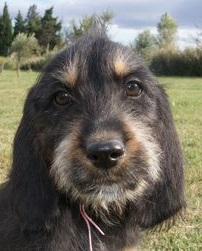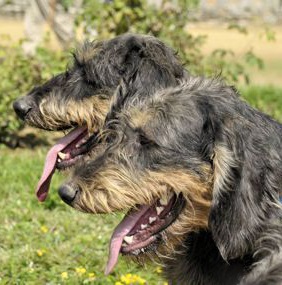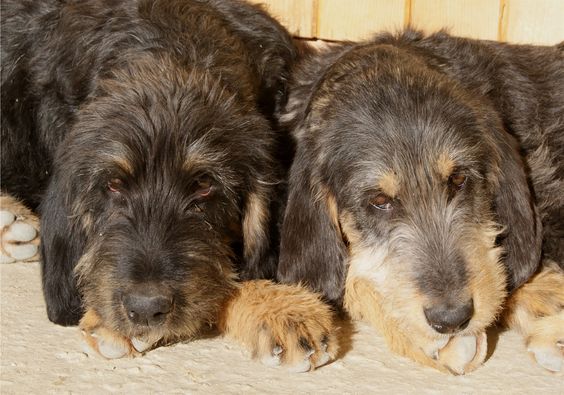Griffon Nivernais
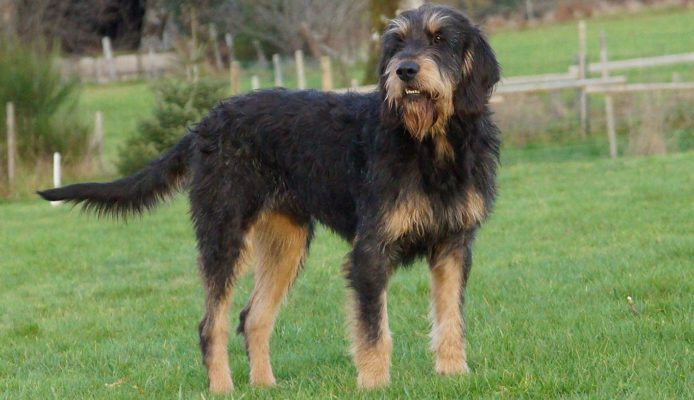
The breed has a soft and gentle character, which is reflected in its facial expression. It is very loyal to its owners and demands their attention. As a result, it does not tolerate isolation and does not like to be treated harshly. Such a breed will learn faster with gentle correction than harsh criticism. The Griffon Nivernais quickly understands what its owner wants and strives to fulfill it.
Table of Contents
Breed Information
| Another Name | – |
| Origin | France |
| Height | Males 55-62 cm Females 52-60 cm |
| Weight | 22-25 kg |
| Fur | Long, shaggy |
| Color | Gray, gray-blue |
| Lifespan | 10-12 years |
| FCI Classification | Scent hounds and related breeds |
| Group | Hunting dogs, for children |
| Price | From $600 |
Breed Photos
Origin History
The Griffon Nivernais breed is an ancient dog, bred more than 700 years ago in the former region of Niverney in France. Members of the breed are often grouped with other dogs, such as the Great Blue Gascon Hound. These French breeds are known for their ability to hunt both small and large games and their willingness to work alone or in packs.
It is often claimed that the Griffon Nivernais dogs were a favorite of King Louis IX. The breed’s origin is widely debated, some claiming that they are descended from the ancient Gallic hound, while others suggest that their ancestors were Bulgarian Barac hunting dogs.
It is believed that this Griffon was traditionally used for hunting wild boars and wolves. The nobility widely used the breed, and so their popularity understandably declined after the French Revolution. Fortunately for the breed, they were also used by peasants and farmers, hunting and protecting any livestock they owned. Despite this, the Griffon Nivernais was close to extinction and experienced a sort of revival in the 1920s when related dogs such as the Greater Vandey Griffon and the Otterhound were allowed to interbreed and increase their numbers. It led to a “reconstruction” of the breed.
It was not until the late 20th century that efforts began to protect the breed and increase the population. In the 1990s, the UKC recognized the breed in its scent hound group, and several dogs were exported overseas to countries such as Canada and the USA. The Griffon Nivernais is still considered a rare breed, and in recent years there has been renewed interest in this French hound.
Appearance
Perhaps the most recognizable physical characteristic of the Griffon Nivernais is its long, shaggy and unkempt fur. They have hairy ears and also have whiskers and bushy eyebrows. Their fur can be gray, wolf gray, or gray-blue. The standard is that they are allowed to have underpaw and pale markings and some white and black fur. The height at the male dogs’ withers is from 55 to 62 cm, and that of the female dogs is from 52 to 60 cm. Both sexes weigh between 22 and 25 kg.
The breed has a long and flathead, a large black nose, and dark brown attentive eyes. Their ears are floppy and reach to the front of the face. Their rectangular body is moderately muscular, with a deep chest and a slight curve of the back. Members of the breed have long, oval feet with dark pigmentation. Their tail is covered with a large amount of coarse fur and goes slightly behind the back.
Character
The breed has a soft and gentle character, which is reflected in its facial expression. It is very loyal to its owners and demands their attention. As a result, it does not tolerate isolation and does not like to be treated harshly. Such a breed will learn faster with gentle correction than harsh criticism. The Griffon Nivernais quickly understands what its owner wants and strives to fulfill it.
Because of its gentle nature, it usually gets along very well with children, especially if raised with them. However, some can be unreliable in company with cats and other small animals because of their strong hunting instincts. He is also very social with other dogs and with people. He is too friendly to be considered a guard dog.
Care
Although many people believe that this breed does not shed, owners will confirm that they lose a small amount of hair throughout the year. However, they may be slightly less allergenic than some other breeds because they leave less fur in the house. The top layer is prone to tangles, but it tends to be loose and easy to remove, so weekly brushing is usually sufficient for daily care. Excessive bathing can damage the coat structure.
All dogs need a nail trim from time to time. Ear cleaning is important to prevent ear infections and should be done at least once a week.
Training
The Griffon does not respond well to abrupt correction and can become shy and withdrawn if the owner loses patience during training. Like any true working breed, it likes to have something to do all the time so that training can go beyond simple obedience. This breed can be taught useful chores around the house or in the garden. Although it is an amiable and affectionate dog, these traits should never be taken for granted. The Griffon Nivernais needs lots of positive socialization experiences from an early age.
Common Diseases
A breed of dog that lives to be 12 years old, the Griffon Nivernais does not suffer from poor health. The following diseases should be controlled:
- hip dysplasia;
- progressive retinal atrophy (PRA);
- ear infections.
Nutrition
The Griffon Nivernais needs two to two and a half cups of high-quality dry food a day, depending on the dog’s weight and activity level. Divide the food into two meals. Griffons do not tend to guard their food, so if there are other pets in the house, they will also dine on the dog’s food.
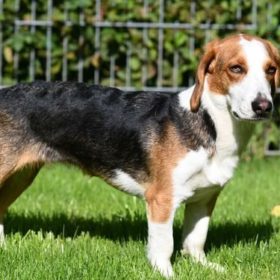 Westphalian Dachsbracke
Westphalian Dachsbracke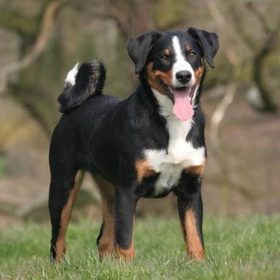 Appenzeller Sennenhund
Appenzeller Sennenhund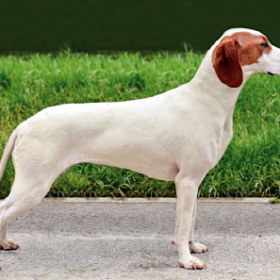 Istrian Short-haired Hound
Istrian Short-haired Hound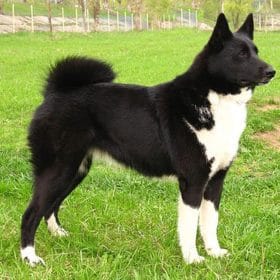 Russo-European Laika
Russo-European Laika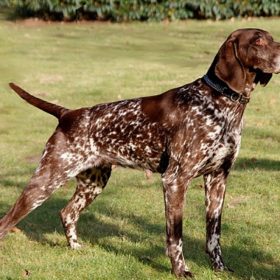 German Shorthaired Pointer
German Shorthaired Pointer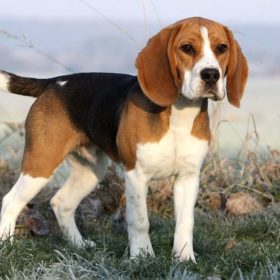 Beagle
Beagle